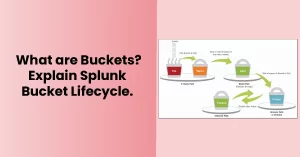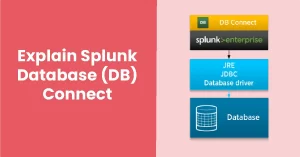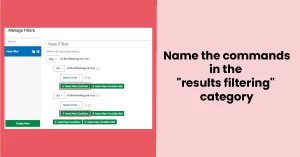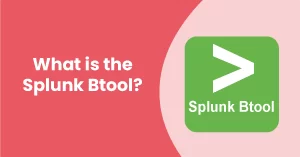Introduction to Splunk Interview Questions
We’ve assembled some of the most common Splunk interview questions. Learn the Splunk indexers, Splunk architecture and summary index, forwarders, Splunk DB Connect, stats commands vs transaction, troubleshooting Splunk performance, Splunk SDK and Web Framework, and more by browsing our expert-compiled questions and answers.
DataTrained’s Splunk Interview Questions will help you learn Splunk, and the Splunk Interview Questions will help you clear the interview.
Due to the proliferation of IoT devices and the growing number of machines in the IT infrastructure, machine data has grown exponentially over the last decade. Machine data offers a wealth of business-critical information that can improve efficiency, productivity, and visibility.
This is when Splunk comes into the picture. We will help you understand Splunk through Splunk interview questions.
You’ve come to the right site if you’re seeking Splunk Interview Questions & Answers for Freshers & Experienced. Many reputable companies around the world provide numerous chances. Splunk has a market share of roughly 36.2%, according to data. As a result, you still have an opportunity to advance in your Splunk career. DataTrained’s Advanced Splunk Interview Questions can assist you in acing your interview and landing your dream job as a Splunk Developer.
About Splunk

Splunk was formed in 2003 to extract insights from enormous volumes of machine data, and its expertise has grown in demand since then. The product, like its specialists, is one of the best DevOps solutions on the market. As a result, if you wish to work for Splunk, you must be able to ace the interview.
Splunk is a software platform that allows users to access, analyze, and display machine-generated data from various sources, including physical devices, networks, servers, Internet of Things devices, and other sources.
The machine data is evaluated and processed before becoming actionable operational intelligence that provides real-time insight. It’s a popular tool for searching, visualizing, monitoring, and reporting on enterprise data. Application management, security and compliance, business and web analytics, and other features are among Splunk’s many capabilities.
Splunk stores all of its data in its indexes; therefore, it doesn’t need a database. Splunk consolidated all relevant data into a single central index, making searching for specific data within a large volume of data simple. Machine data is also critical for monitoring, comprehending, and optimizing machine performance.
Don’t panic; we’ve compiled a list of the most common Splunk interview questions and answers to assist you in improving your Splunk skills and landing the job you want. Let’s start with a definition of Splunk through Splunk interview questions. In this article, we’ve compiled a list of Splunk interview questions and answers for both freshmen and experienced applicants so you can prepare for your job interview and get closer to your ideal job. You can apply for a Splunk interview from their official site.
Splunk Interview Questions For Freshers

1. What is Splunk used for?
Machine data is challenging to comprehend and has an unstructured format (data that needs to be organized according to a predefined data model), making it inappropriate for data analysis and visualization. Splunk is the ideal tool for dealing with such issues. For numerous reasons, Splunk is used to examine machine data:
- Provides operational insights: In our blog of Splunk interview questions. The Splunk platform analyses machine data for patterns and trends, offering operational insights that help businesses make better decisions for the organization’s profitability.
- Enhances operational visibility: In our blog of splunk interview questions. Splunk generates a comprehensive view of operations based on machine data and combines it across the whole infrastructure to improve operational visibility.
- Ensures proactive monitoring: In our blog of splunk interview questions. Splunk uses real-time machine data analysis to detect system problems and vulnerabilities (external/internal breaches and incursions), ensuring proactive monitoring.
- Search and Investigation: Splunk searches and investigates problems by connecting events across several data sources and discovering patterns in massive datasets using machine data.
2. What are Buckets? Explain Splunk Bucket Life cycle.

Let’s discuss Buckets In our blog of splunk interview questions. Splunk organizes indexed data into ‘buckets,’ which are directories. It is a physical directory that contains events from a specific period.
As a bucket age, it goes through numerous stages. The following are the stages it goes through:
- Hot: A hot bucket contains data that has just been indexed. It is available for writing. For each index, there can be one or more hot buckets.
- Warm: A warm bucket is made of data rolled out of a hot bucket. There are a lot of hot buckets.
- Cold: Data is rolled out from a warm bucket into a cold bucket. There are a lot of ice buckets.
- Frozen: Data from a cold bucket is rolled into a frozen bucket. By default, the Indexer deletes frozen data, but we can archive it.
3. Can you explain how Splunk works?
You must first understand how the software works internally to use Splunk in your infrastructure. In our blog of splunk interview questions. Splunk processes data in three phases in general:
- Data Input Stage: Splunk consumes raw data from various sources, breaking it down into 64K blocks and annotating each block with metadata keys at the data input step. A metadata key contains the data’s hostname, source, and source type.
- Data Storage Stage: Parsing and Indexing are two different processes conducted in the Data Storage Stage.
- Splunk examines the data, changes it, and extracts the relevant information during the Parsing step. Because it divides the data sets into discrete events, this is also known as “event processing.”
- Splunk software writes the parsed events into the index queue during indexing. One of the key advantages of doing so is that the information is readily available to everyone during the search.
- Data Searching Stage: This stage often governs how the user accesses, views, and uses the index data. Based on the user’s reporting requirements, reports, event kinds, dashboards, visualization, alerts, and other knowledge items can be developed.
4. Explain License violation. How will you handle or troubleshoot a license violation warning?
After a succession of licensing warnings, license violations occur, and license warnings occur when your daily indexing volume exceeds the license’s limit. A license violation occurs when you receive repeated license warnings and exceed your license’s maximum warning limit.
If you have a Splunk commercial license, the Indexer
will stop triggering search results and reports after five warnings in 30 days. The free version, on the other hand, only receives three warnings. In our blog on splunk interview questions, we will try to help you understand every major concept regarding splunk interview questions.
Avoid Getting a License Warning:
- Keep track of your license usage over time to ensure you have enough volume to meet your daily requirements.
- The license utilization report in the licensing master can aid in index volume troubleshooting.
- Set up an alert in the monitoring console to track daily license consumption.
Licensing Violation Troubleshooting Warning:
- Determine which index/source received more data than normal recently.
- To identify the pool for which the violation occurred, check the Splunk Master license pool-wise quotas.
- After determining which pool is receiving more data, we need to figure out which source type will likely receive more data than usual.
- After determining the source type, the next step is determining which system sends so many logs and why.
- We can then troubleshoot the issue as needed.
5. Write down some common Splunk ports.
In our blog of splunk interview questions. The following are common ports used by Splunk:
- Web Port: 8000
- Management Port: 8089
- Network port: 514
- Index Replication Port: 8080
- Indexing Port: 9997
- KV store: 8191
6. What do you mean by Splunk Dashboards and write its type?
Through panels, tables, charts, event lists, and other data visualizations are represented in dashboards. Dashboard panels visually convey or display a chart, table, or summary data attractively. Various panels and multiple reports and graphics can be added to the same dashboard.
Splunk is a well-known data platform that offers numerous customization and dashboard choices. Splunk interview questions help you to get a better understanding of the concept.
Splunk allows you to construct three main kinds of dashboards:
- Dynamic form-based dashboards: Splunk users can update the dashboard data based on values supplied in input fields without leaving the page with dynamic form-based dashboards. A dashboard can be customized by including input fields (such as time, radio buttons, text boxes, checkboxes, dropdowns, and so on) that change the data depending on the selected option. This type of dashboard is important for troubleshooting and data analysis.
- Static Real-Time Dashboards: These dashboards are frequently presented on a huge screen for continuous viewing. It also includes alarms and indicators to help necessary personnel respond quickly.
- Scheduled Dashboards: These dashboards can be downloaded as PDF files and shared with team members at predetermined intervals. There are instances when only particular viewers/users can view live dashboards.
This blog of splunk interview questions. Security analytics dashboards, patient treatment flow dashboards, eCommerce website monitoring dashboards, exercise tracking dashboards, and runner data dashboards are just a few examples of Splunk dashboards.
7. What role does License Master play in Splunk? What happens if the License Master can’t be reached?
This blog of splunk interview questions. The license master in Splunk is responsible for ensuring that the limited quantity of data is indexed. Because each Splunk license is based on the amount of data that enters the platform in 24 hours, keeping the environment within the bought volume restrictions is critical.
It is impossible to search the data if the licensing master is absent. As a result, just searching is disabled while data indexing continues. The data that is entered into the Indexer will not be affected. Data will continue to flow into your Splunk deployment, and the Indexers will index it as usual.
You will, however, receive a warning message on top of your Search head or web interface if you surpass the indexing volume limit, allowing you to either reduce your data intake or purchase a greater capacity license.
8. Explain Splunk Database (DB) Connect.

Splunk Database (DB) Connect is a SQL (Structured Query Language) database extension/plugin for Splunk that allows for easy integration of database data with Splunk interview questions & queries/reports. Splunk DB Connect successfully combines structured data from databases with unstructured machine data, allowing Splunk Enterprise to extract insights from the combined data.
In our blog of splunk interview questions. Following are Few of the advantages of using Splunk Database Connect:
- You’re adding new data inputs for Splunk Enterprise by using Splunk DB Connect, which means you’re adding new data sources to Splunk Enterprise. Splunk DB Connect immediately imports your database tables, rows, and columns into Splunk Enterprise, which indexes them. Once you’ve imported the relational data into Splunk Enterprise, you can analyze and display it like any other data.
- Splunk DB Connect also lets you write Splunk Enterprise data into relational databases.
- DB Connect’s Database Lookup capability allows you to reference fields from an external database that match fields in your event data. You may augment your event data with more useful information this way.
9. Name a few features that aren’t available in the free edition of Splunk.
In our blog of splunk interview questions. Splunk’s free version misses the following features:
- Searching on a large scale
- Data transmission through HTTP or TCP (to non-Splunk)
- Based on a real-time design, agile reporting and statistics are available.
- Authentication and scheduled searches/alerts
- Taking care of deployments.
10. What role does the time zone property play in Splunk?
This blog of splunk interview questions. The time zone is an important consideration when looking for occurrences in the context of fraud or security. Because Splunk uses the time zone set by your browser, this is the case. The time zone linked with the machine/computer system you’re working on is then picked up by your browser.
As a result, if you look for an event in the wrong time zone, you cannot locate it. Splunk detects the timezone when data is entered, which is significant for finding and comparing data from various sources.
For example, you can search for events arriving at 4:00 p.m. IST for your London data center, Singapore data center, etc. The timezone property is, therefore, necessary when correlating such events. We will try to help you understand every concept through our splunk interview questions and make you job ready.
Splunk Interview Questions For Experienced

1. Name a few important Splunk search commands
In our blog of Splunk interview questions, let’s see some important Splunk commands:-
- Abstract: It summarizes the text of the search results. The summary takes the place of the original text.
- Addtotals: For each result, it adds up all of the numerical fields. The findings can be found under the Statistics tab. Rather than calculating the total of each numeric field, you can specify a list of fields to calculate the sum of.
- Accumulate: It calculates a numeric f
ield’s running total. This total can be returned to the same field or a new one you specify. - Fill down: It usually replaces NULL values with the fields or collection of fields’ most recent non-NULL value. If no list of fields is provided, fill-down will be applied to all fields.
- Typer: The event type field for search results matching a specific/known event type is calculated by Typer.
- Rename: It renames the field that has been supplied. Wildcards can be used to specify several fields.
- Anomalies: It calculates an event’s “unexpectedness” score. The anomalies command can find strange or unexpected events or field values.
2. Name the commands in the “Results Filtering” category.

In our blog of splunk interview questions. The commands in the “filtering results” category are listed below:
- Search: This operation either retrieves events from indexes or filters the results of the previous search command. Keywords, wildcards, quoted phrases, and key/value expressions can all be used to retrieve events from your indexes.
- Sort: The search results are arranged according to the fields that have been specified. The results can be sorted in any order, including reverse, ascending, and descending. The outcomes of sorting might also be limited.
- Where: On the other hand, the ‘where’ command uses ‘eval’ expressions to narrow search results. When you use the search command, it just keeps the search results for which an assessment was successful; however, the ‘where’ command allows you to go further into those search results. The number of active nodes can be determined with the search command. However, the ‘where’ command will provide a matching condition of an active node running a certain application.
- Rex: The Rex’ command allows you to extract certain fields or data from your events. The Rex’ command, for example, can be used to determine certain fields in an email id, such as scaler@interviewbit.co. Scaler will be the user ID, interviewbit.co will be the domain, and interviewbit will be the company. You may slice, split, and break down your events any way you like with Rex.
3. Explain the distinction between the stats and eventstats commands.
In our blog of splunk interview questions, let’s see the distinction between stats and event stats.
- Stats: Splunk’s Stats command calculates statistics for each field in your events (search results) and stores the results in newly generated fields.
- Eventstats: This command, like stats, calculates a statistical result. The Eventstats command is identical to the Stats command, except it adds the aggregate results to each event inline (if only the aggregate is relevant to that event).
4. Mention a few crucial Splunk configuration files.
In Splunk interview questions, the following configuration files are critical:
- Props.conf: This file sets indexing properties like timezone offset, pattern collision priority, and custom source type rules, among other things.
- Indexes.conf: Indexes.conf is a file that controls and configures index settings.
- Inputs.conf: Inputs.conf is a file configuring data inputs.
- Transforms.conf: This file can be used to set up regex transformations on data inputs.
- Server.conf: The general status of the Splunk Enterprise instance can be configured using various options.
5. Write down the commands for starting and stopping the Splunk service.
In our blog of splunk interview questions. To start and terminate Splunk services, use the following commands:
- Start Splunk service ./splunk start
- Stop Splunk service ./splunk stop
- Restart Splunk service ./splunk restart
6. What is the Splunk Btool?

In our blog of splunk interview questions, let’s understand splunk Btool. The btool command-line tool can determine what settings are configured on a Splunk Enterprise instance and where they are set up. We can troubleshoot configuration file difficulties with the Btool command.
Conf files, also known as Splunk software configuration files, are imported and combined to provide a functioning set of configurations that Splunk software can utilize when doing tasks. Conf files can be found in various locations throughout the Splunk installation. Btool simulates the merging process and generates a report with the combined settings using the on-disk conf files.
7. What exactly does the Lookup command imply? Explain the differences between the commands Inputlookup and Outputlookup.
To get the value of an event, Splunk lookup commands can be used to retrieve specific fields from an external file (e.g., a Python script, a CSV file, etc.).
- Inputlookup: This function searches the contents of a lookup table (CSV lookup or a KV store lookup). It is used to collect data. For example, this command may accept the product price or name as input and match it with an internal field such as the product ID.
- Outputlookup: On the other hand, the output-lookup command outputs search results to a given lookup table or sets a search result in a certain lookup table.
These splunk interview questions will help you to get familiar with splunk.
8. What does the term “Summary Index” in Splunk mean?
This blog of splunk interview questions. Splunk’s analysis, reports, and summaries are stored in summary indexes. This is a low-cost and quick approach to running a query for an extended period. It’s the default index that Splunk Enterprise uses if the user doesn’t specify another. The very important Summary Index is that you can keep the analytics and reports even after the data has aged.
9. What are the advantages of using Forwarders to get data into a Splunk instance?
This blog of splunk interview questions. Bandwidth throttling, TCP connection, and an encrypted SSL connection for sending data from a forwarder to an indexer are all advantages of using forwarders to get data into Splunk.
The data provided to the Indexer is load balanced by default; thus, even if one indexer instance is offline due to a network outage or maintenance, the data may always be routed to another indexer instance in a short amount time. Additionally, before transferring the events, the forwarder caches them locally, generating a temporary data backup.
10. If the License Master is unreachable?
In our blog of splunk interview questions, it is simply impossible to search the data if the licensing master is unavailable. The data entering the Indexer, on the other hand, will be unaffected. The data will continue to flow into your Splunk deployment, and the Indexers will index it as usual.
However, you will receive a warning message on top of your Search head or web UI stating that you have exceeded the indexing volume and must either reduce the amount of data coming in or purchase a higher capacity license.
The candidate should respond that indexing does not halt; only searching does.
Coding Interviews Related Blogs:-
15+ Top Infosys Coding Questions
30+ Top MVC Interview Questions
If you are looking for Learn Python/Java/Coding:- Click Here
Conclusion
Are you searching for a new job or attempting to establish a Splunk career? Implementing Splunk will undoubtedly revolutionize your company and propel it to new heights. As a result, be prepared for the most intensive job interview possible, as the competition is tight.
Splunk consultants, developers, engineers, specialists, information security analysts, and others are in high demand. A Splunk profession requires knowledge of architecture and configuration points, Splunk files, indexers, forwarders, and other Splunk components. These Splunk interview questions can help you get into the swing of things and prepare you for splunk interview questions.
Frequently Asked Questions
1. How many rounds of interviews does Splunk have?
In our blog of splunk interview questions. The interviewing process can take anywhere from 2 to 6 weeks. The onsite consists of five rounds of questions, largely technical in nature, lunch, and a one-on-one interview with the recruiting manager. There is no information available about the data scientist interviews procedure. The interviewing process can take anywhere from 2 to 6 weeks.
2. Is it difficult to get a job at Splunk?
Is it difficult to get a job at Splunk? Users on Glassdoor rated their interview experience at Splunk as 38.0 percent good, with a 2.85 out of 5 difficulty rating (where 5 is the highest level of difficulty).
3. How do I interview with Splunk?
Here are 5 suggestions to help you prepare for your interview:
- Use LinkedIn to look up your interviewers.
- Do your homework.
- Make a strategy.
- Download Our Product and Take Our Free Splunk Fundamentals Training.
- Make Your Pitch and Get Your Questions Answered.
4. What is the latest version of Splunk?
In our blog of splunk interview questions. Splunk Enterprise 8.2. 6 is the most recent version of Splunk.
- Tackle your most difficult Security, IT, and DevOps use cases with this version of Splunk.
- Any data can be streamed, collected, and indexed at any scale.
- With sophisticated, visually appealing dashboards, you can search, analyze, and visualize your data.
5. What are the common port numbers used by Splunk?
These are the common port numbers used by Splunk
|
Service |
Port Number Used |
|
Splunk Management port |
8089 |
|
Splunk Indexing port |
9997 |
|
Splunk Index Replication port |
8080 |
|
Splunk Network port |
514 (Used to get data from the Network port, i.e., UDP data) |
6. What distinguishes Splunk from other search engines?
In our blog of splunk interview questions, Splunk is a cutting-edge technology that searches log files stored on a computer system. It’s also beneficial for operational intelligence. Splunk provides a wide range of applications and does not necessitate the use of complex databases, interfaces, or controls. It can also be utilized as a highly scalable and stable cloud application.
Any type of data can be indexed using the Splunk platform. Splunk can index any and all IT streaming, machine, and historical data, including Microsoft Windows event logs, web server logs, live application logs, network feeds, metrics, change monitoring, message queues, and archive files, among other things.
8. What is the best way to query Splunk?
You can search for Error, Login, Logout, Failed, and other terms in the search field. The Search & Reporting app can be found on the left side of your Splunk instance after logging in. To access the app, go to the Search & Reporting tab. A search bar with a time range picker can be seen.
9. Why do individuals want to be a part of the Splunk community?
The Splunk experience includes great benefits, continual training, entertaining employee activities, giving back, and a diverse and inclusive environment. We hire exceptional people who perform at their best when they have a healthy work-life balance, fantastic coworkers, and plenty of options to relax!
10. Is it a good place to work at Splunk?
In comparison to 57 percent of employees at a typical U.S.-based company, 92 percent of Splunk Inc. employees feel it is a wonderful place to work. Splunk is the world’s first Data-to-Everything Platform(TM), bringing data to every question, decision, and action to unleash trapped value. Over 20,000 clients across the world rely on Splunk to help them break down the barriers between data and action.













